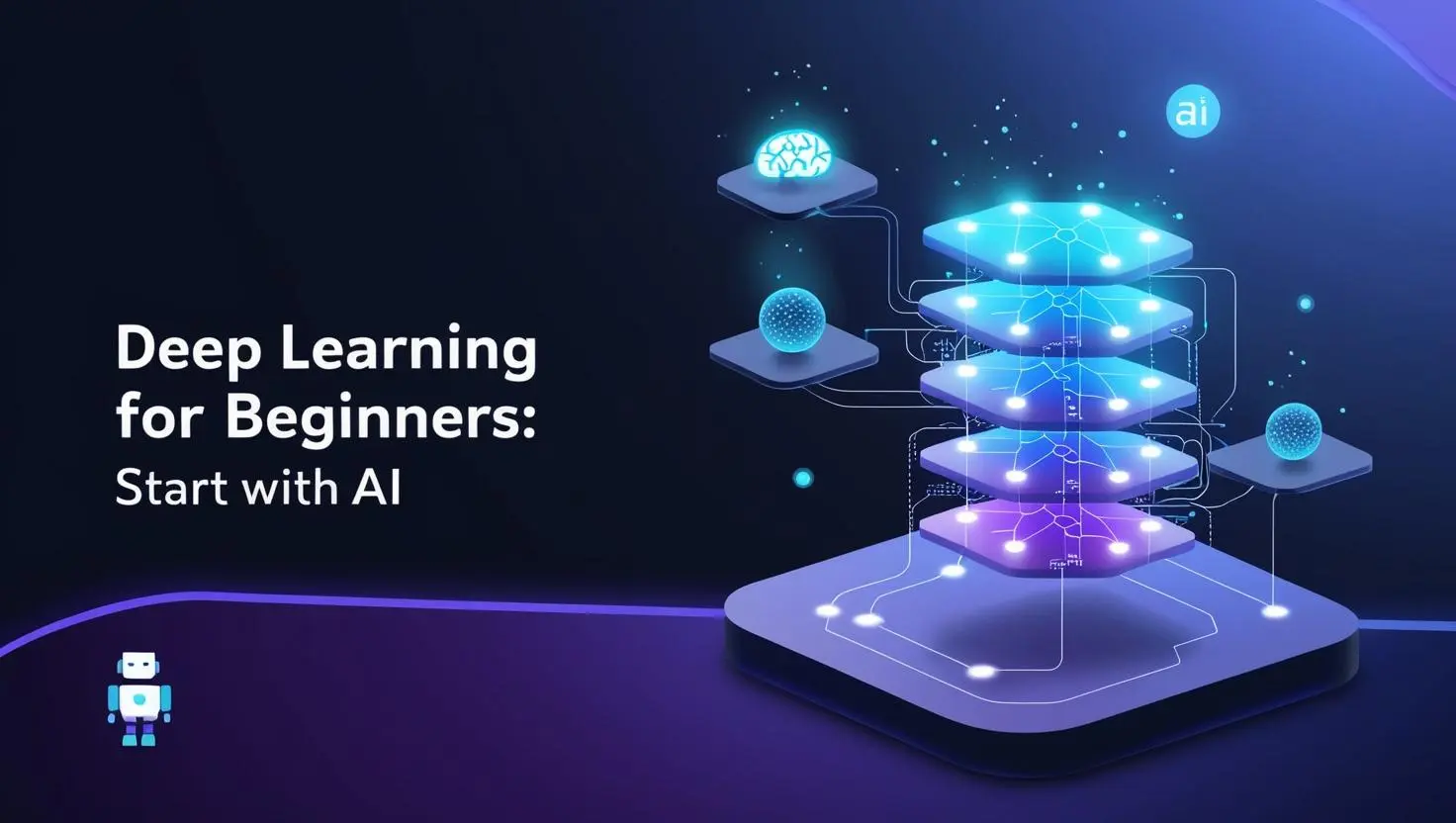Deep learning, a subset of machine learning (ML) and artificial intelligence (AI), is revolutionizing industries like healthcare, finance, and autonomous vehicles. For beginners, understanding deep learning can seem daunting, but this guide simplifies the core concepts, tools, and steps to help you start your journey.
Why Learn Deep Learning?
- High demand for AI and deep learning skills in tech jobs.
- Enables solving complex problems like image recognition and natural language processing (NLP).
- Foundation for innovations like ChatGPT, self-driving cars, and medical diagnostics.
What is Deep Learning?
Deep learning mimics the human brain’s neural networks to process data and identify patterns. It uses artificial neural networks (ANNs) with multiple layers (hence “deep”) to learn from vast datasets.
Key Components of Deep Learning
- Neural Networks: Layers of interconnected nodes (neurons) that process inputs.
- Training Data: Labeled datasets used to teach models.
- Algorithms: Backpropagation and gradient descent optimize model accuracy.
Example: A deep learning model trained on cat images learns to identify cats in new photos.
Deep Learning vs. Machine Learning: Key Differences
While both fall under AI, here’s how they differ:
| Aspect | Machine Learning | Deep Learning |
| Data Dependency | Works with smaller datasets | Requires massive labeled data |
| Feature Engineering | Manual feature extraction needed | Automatically extracts features |
| Hardware | Works on CPUs | Needs GPUs/TPUs for training |
How Do Neural Networks Work?
Neural networks consist of three layers:
- Input Layer: Receives data (e.g., pixels from an image).
- Hidden Layers: Process data through weights and activation functions (e.g., ReLU).
- Output Layer: Delivers the final prediction (e.g., “cat” or “dog”).
Popular Neural Network Types:
- Convolutional Neural Networks (CNNs): Ideal for image processing.
- Recurrent Neural Networks (RNNs): Used for sequential data like text or speech.
Real-World Applications of Deep Learning
- Computer Vision: Facial recognition, medical imaging.
- Natural Language Processing (NLP): Chatbots, translation tools.
- Autonomous Vehicles: Object detection and path planning.
- Recommendation Systems: Netflix, Amazon product suggestions.
Getting Started with Deep Learning: A Step-by-Step Guide
1. Learn Prerequisites
- Programming: Python is the top language for deep learning.
- Math Basics: Linear algebra, calculus, and statistics.
- Frameworks: TensorFlow, PyTorch, or Keras.
2. Explore Online Courses
- Google’s Deep Learning Course (Coursera).
- Fast.ai for practical, code-first tutorials.
3. Build Your First Project
- Start with a simple image classifier using TensorFlow.
- Use datasets like MNIST (handwritten digits) or CIFAR-10.
4. Join Communities
- GitHub, Kaggle, and Reddit’s r/MachineLearning for collaboration.
Challenges in Deep Learning
- Data Scarcity: Requires large, labeled datasets.
- Computational Costs: Training models demands high-end hardware.
- Overfitting: Models may perform well on training data but fail in real-world scenarios.
Future of Deep Learning
Advancements in transformers (e.g., GPT-4) and reinforcement learning are pushing AI boundaries. Industries like climate science and robotics will increasingly rely on deep learning.
FAQs for Deep Learning Beginners
Q: Is coding necessary for deep learning?
A: Yes, Python is essential for implementing models.
Q: What are the prerequisites for learning deep learning?
A: Basic programming, algebra, and familiarity with ML concepts.
Q: Can I learn deep learning without a background in AI?
A: Absolutely! Start with beginner courses and practice consistently.
Conclusion:
Deep learning for beginners is an exciting field with limitless potential. By mastering fundamentals, practicing with projects, and staying updated with trends, you can leverage AI to solve real-world problems. Ready to dive deeper? Explore our step-by-step deep learning tutorials and join the AI revolution!

